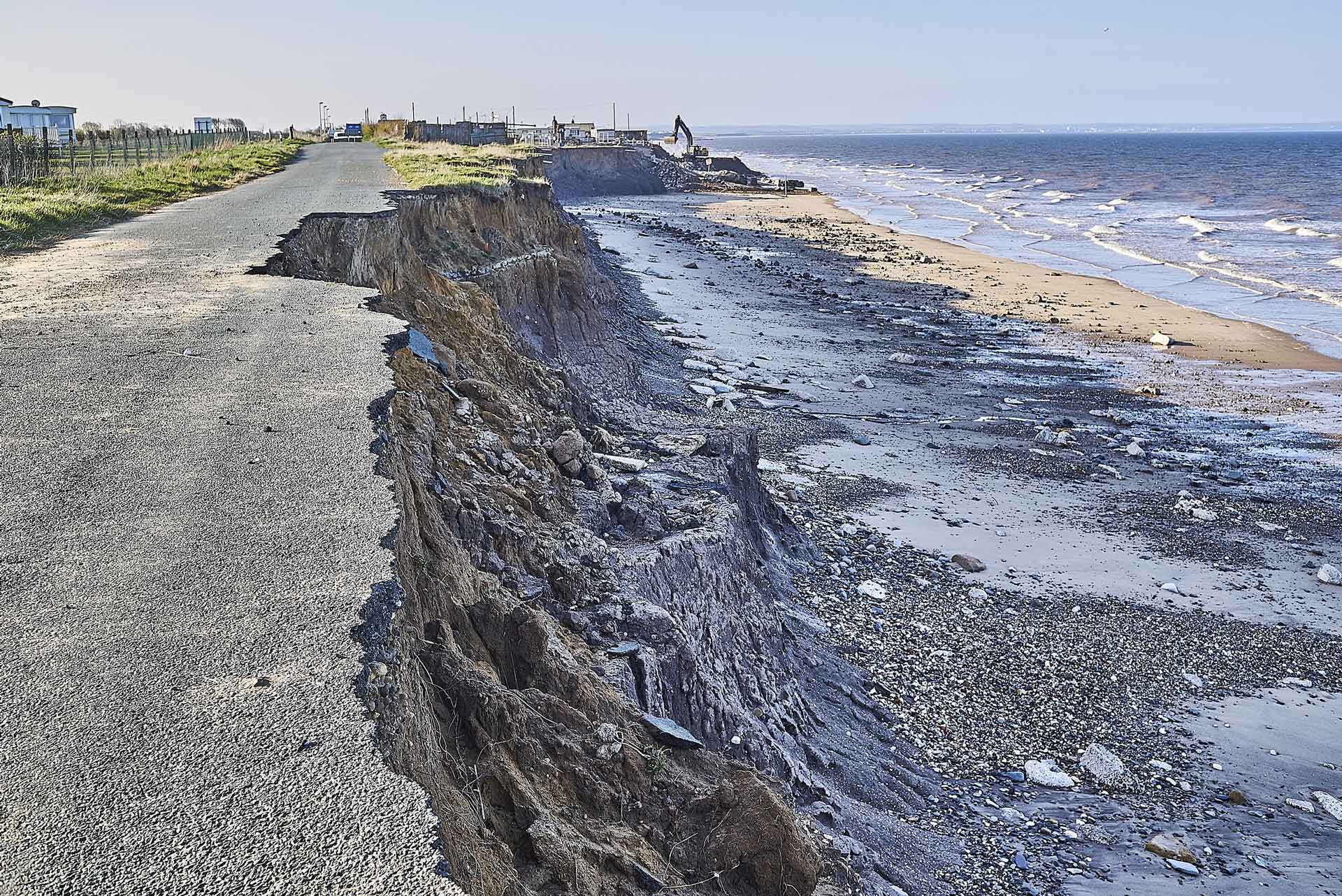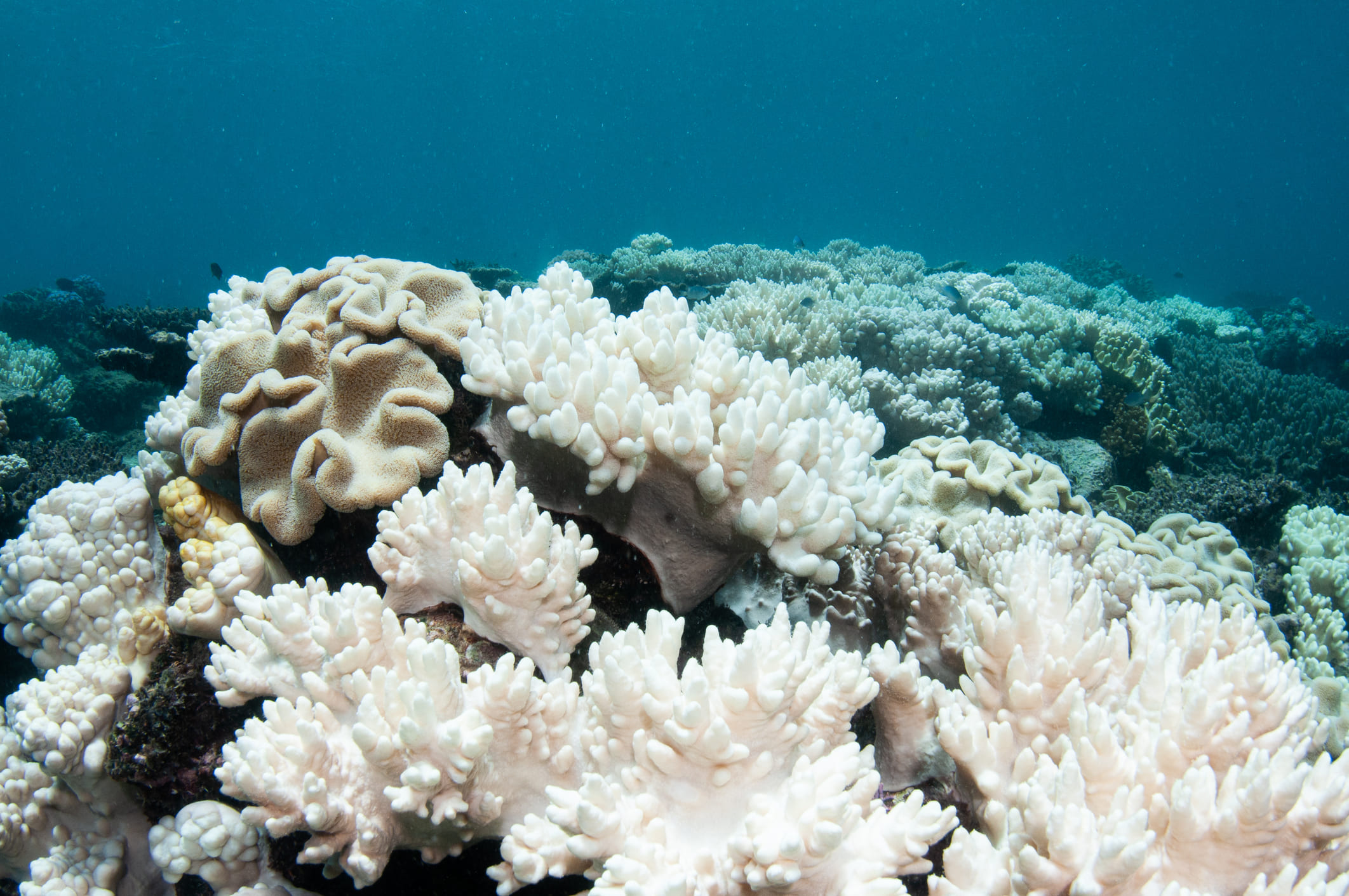Five key points in the IPCC report on climate change impacts and adaptation
Five key points in the IPCC report on climate change impacts and adaptation
By SMU City Perspectives team
Published 4 March, 2022
In brief
- The United Nations Intergovernmental Panel on Climate Change (IPCC) looked at the impacts, adaptation and vulnerabilities associated with the climate crisis. It starked new findings on the way current global warming of 1.1℃ is impacting natural and human systems, and on how our ability to respond will be increasingly limited with every additional increment of warming.
- Five key points in the IPCC report on climate change impacts and adaptation: 1) Risks will be magnified if warming is unchecked. These climate hazards will unavoidably increase, 2) Adaptation is hitting limits. Adaptation cannot prevent all losses and damages, which are unequally distributed around the world
- 3) ‘Maladaptation’ can make things worse. It can further deepen existing social inequities and lead to adverse outcomes. 4) Cities are a challenge – and an opportunity. Climate change impacts worsen ongoing problems in the cities but are also sites of opportunity; and 5) The window of opportunity is closing, rapidly. The world is on a path to exceed 1.5℃ warming within the next decade.
The latest report from the UN’s Intergovernmental Panel on Climate Change (IPCC) looks at the impacts, adaptation and vulnerabilities associated with the climate crisis, and we are three of the 270 scientists and researchers who wrote it. The document reports stark new findings on the way current global warming of 1.1℃ is impacting natural and human systems, and on how our ability to respond will be increasingly limited with every additional increment of warming.
Here are five key points in the new report:
1. Risks will be magnified if warming is unchecked
Since the previous IPCC report on impacts and adaptation back in 2014, heatwaves, droughts, wildfires and other extremes have increased in frequency and intensity far beyond natural variability. These hazards have substantially damaged ecosystems across the globe, and in some cases led to irreversible losses such as species extinction. Humans are also hit too, through heightened food and water insecurities, greater incidences of food-, water- and vector-borne diseases, and worse physical and mental health.
If global warming is left unchecked, these climate hazards will unavoidably increase. Every increment of global temperature rise magnifies the resulting loss and damage.
2. Adaptation is hitting limits
The report says that much of the world’s current climate adaptation measures are not necessarily effective. In fact, there are both “hard” and “soft” limits. In natural systems, the hard limits mean that no amount of human intervention (beside reducing greenhouse gas emissions) can make a difference. For example, warm water coral reefs may completely disappear if ocean temperatures continue increasing – you can’t simply “adapt” to that.
In human systems, soft limits include obstacles like insufficient finance and poor planning, which could be addressed through more inclusive governance. However there are also hard limits such as limited water in small islands, as rising seas and extreme weather can mean sea water contaminates fresh water. And once we lose an island to sea-level rise, no amount of adaptation will bring that island back.
The IPCC also finds that adaptation cannot prevent all losses and damages, which are unequally distributed around the world.
3. ‘Maladaptation’ can make things worse
The IPCC cites evidence of adaptation actions that further deepen existing social inequities and lead to adverse outcomes – what’s known as “maladaptation”. One example would be when a sea wall is built to protect a settlement from sea-level rise and instead prevents rainwater from draining, leading to the emergence of flooding as a new hazard. Unfortunately, there is ample evidence of maladaptation and it especially affects marginalised and vulnerable people.
For this latest report, the IPCC also made a conscious effort to bring in philosophers, anthropologists and other authors from many different disciplines which may not be seen as traditional areas of climate change research. This meant drawing on more qualitative social sciences and providing a richer picture of topics like vulnerability and climate justice.
Unlike any other IPCC report before it, this one attempted to involve indigenous knowledge. However there are strict rules in the IPCC about what sort of knowledge can be included, with anything not peer-reviewed seen as secondary or questionable by member countries. While this new report is an inclusive step, there is still significant work needed to ensure that knowledge such as indigenous oral history has a place in IPCC assessments.

4. Cities are a challenge – and an opportunity
Among the figures reported, more than one billion people in low-lying settlements face hazards such as sea-level rise, subsiding coasts, or flooding at high tides, while 350 million urban residents live with the threat of water scarcity. Climate change impacts such as extreme temperatures also worsen ongoing problems in cities, such as air pollution.
Yet cities are also sites of opportunity, and the IPCC report maps a wide range of options for urban adaptation. These include physical barriers to stop floods and rising seas, or more nature-based solutions such as planting trees upstream to slow excess river flows and shade homes in heatwaves, or restoring mangroves that protect communities from coastal flooding. The report also cites social policy measures such as cash transfers to provide safety nets, insurance and other types of livelihood support.
5. The window of opportunity is closing, rapidly
The new report emphasises the need to couple adaptation measures with greenhouse gas emission reductions to enable “climate resilient development”. This will require adequate financing, inclusive governance, transparency in decision making, and the participation of a wide range of people and groups.
Yet, the world is on a path to exceed 1.5℃ warming within the next decade. Current development policies which accelerate greenhouse gas emissions actually increase climate maladaptation risks and widen social inequalities.
To urgently shift our collective course from 1.5℃ of warming and beyond, the report charts paths for climate-resilient development that policymakers can apply, all of which reduce climate risks while improving lives, especially among those most vulnerable to global warming. Time, however, is running short.
This commentary, originally published on The Conversation, is co-authored by:
- Lisa Schipper, Environmental Social Science Research Fellow, University of Oxford
- Vanesa Castán Broto, Professor of Climate Urbanism, University of Sheffield
- Winston Chow, Associate Professor of Science, Technology and Society, Singapore Management University
Methodology & References
- Climate Change 2022: Impacts, Adaptation and Vulnerability. IPCC. Retrieved from
{https://www.ipcc.ch/report/sixth-assessment-report-working-group-ii/} - AR5 Climate Change 2014: Impacts, Adaptation, and Vulnerability. IPCC. Retrieved from
{https://www.ipcc.ch/report/ar5/wg2/} - UNESCO (2019, September 30). Small islands: meeting the challenges of freshwater resilience. UNESCO. Retrieved from
{https://en.unesco.org/news/small-islands-meeting-challenges-freshwater-resilience} - Cunsolo, A., Aylward, B., and Harper, S. (2022, February 28). Rapidly increasing climate change poses a rising threat to mental health, says IPCC. The Conversation. Retrieved from
{https://theconversation.com/cop26-deal-how-rich-countries-failed-to-meet-their-obligations-to-the-rest-of-the-world-171804} - Vanhala, L. (2021, November 14). COP26 deal: how rich countries failed to meet their obligations to the rest of the world. The Conversation. Retrieved from {https://theconversation.com/cop26-deal-how-rich-countries-failed-to-meet-their-obligations-to-the-rest-of-the-world-171804}
- Scoville-Simonds,M., Vincent, K., and Eriksen, S. (2021, February 1). Guest post: Why avoiding climate change ‘maladaptation’ is vital. Carbon Brief. Retrieved from {https://www.carbonbrief.org/guest-post-why-avoiding-climate-change-maladaptation-is-vital/}
- Glavovic, B. (2022, February 28). IPCC report: Coastal cities are sentinels for climate change. It’s where our focus should be as we prepare for inevitable impacts. The Conversation. Retrieved from
{https://theconversation.com/ipcc-report-coastal-cities-are-sentinels-for-climate-change-its-where-our-focus-should-be-as-we-prepare-for-inevitable-impacts-177726 - Grose, M., Meinshausen, M., Canadell, P. and Nicholls, Z. (2021, August 9). IPCC says Earth will reach temperature rise of about 1.5℃ in around a decade. But limiting any global warming is what matters most. The Conversation. Retrieved from
{https://theconversation.com/ipcc-says-earth-will-reach-temperature-rise-of-about-1-5-in-around-a-decade-but-limiting-any-global-warming-is-what-matters-most-165397} - Schipper, L. Bronto, V. C., and Chow, W. (2022, March 3). Five key points in the IPCC report on climate change impacts and adaptation. The Conversation. Retrieved from {https://theconversation.com/five-key-points-in-the-ipcc-report-on-climate-change-impacts-and-adaptation-178195}



